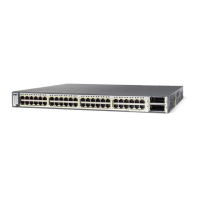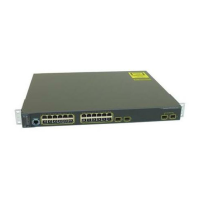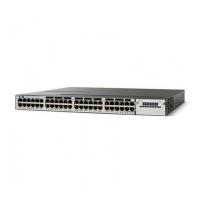2-8
Catalyst 3750-X, 3750-E, 3560-X, and 3560-E Switch System Message Guide
OL-9772-05
Chapter 2 Message and Recovery Procedures
AUTHMGR Messages
AUTHMGR Messages
Error Message AUTHMGR-5-SECURITY_VIOLATION: Security violation on the interface
[chars], new MAC address ([enet) is seen. AuditSessionID [chars]
Explanation A host on the interface attempted to gain access to the network or attempted to
authenticate. The interface mode does not support the number of hosts that are attached to the
interface. This is a security violation, and the interface has been error disabled. The first [chars] is
the interface, [enet] is the Ethernet address of the host, and the second [chars] is the session ID.
Recommended Action Make sure that the interface is configured to support the number of attached
hosts. Enter the shutdown interface configuration command followed by no shutdown interface
configuration command to restart the interface.
Error Message AUTHMGR-5-VLANASSIGN: VLAN [dec] assigned to Interface [chars]
AuditSessionID [chars]
Explanation A VLAN was assigned. [dec] is the VLAN ID, the first [chars] is the interface, and the
second [chars] is the session ID.
Recommended Action No action is required.
Error Message AUTHMGR-7-FAILOVER: Failing over from [chars] for client ([chars]) on
Interface [chars] AuditSessionID [chars]
Explanation The authorization manager is failing over from the current authentication method to
another method. The first [chars] is the current authentication method, the second [chars] is the
client
ID, the third [chars] is the interface, and the fourth [chars] is the session ID.
Recommended Action No action is required.
Error Message AUTHMGR-7-NOMOREMETHODS: Exhausted all authentication methods for
client ([chars]) on Interface [chars] AuditSessionID [chars]
Explanation All available authentication methods have been tried for the client, but authentication has
failed. The first [chars] is the client ID, the second [chars] is the interface, and the third [chars] is the
session ID.
Recommended Action No action is required. If local authorization has been configured, the port is
authorized based on the local authorization method. Otherwise, authentication restarts according to
the configured reauthentication period.
